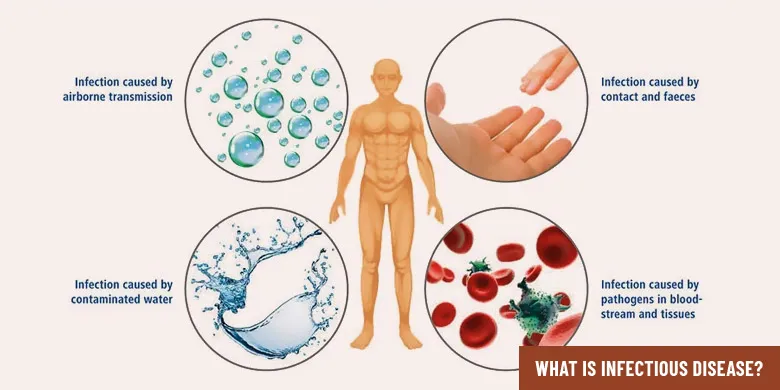What Is Infectious Disease?

To put infectious disease definition in the simplest terms, it is referred to as the invasion of a foreign organism into a host’s body, where it replicates itself and alters the health conditions of the victim. The foreign invaders are in reality microbes or microbial agents commonly refereed as pathogens. These tiny pathogens are usually not visible with a naked eye. It is to be noted that infectious conditions are contagious, which means that they can be transmitted from an affected person’s body to a healthy or an uninfected body.
Types of Infectious Diseases
To better cope with a contagious disorder, we need to know what kinds of infectious diseases are there. Usually, there are two main types. The first category is where the pathogens, entering an individual’s body, affect their health in a negative way by replicating themselves and causing inflammation. This condition is commonly referred to as the infectious disease. The second category is where the pathogens enter the body and replicate but do not alter the health negatively. This type of condition is known as subclinical infection.
Infection Causing Agents:
After understanding what infectious disease is and what it does, it is time to elaborate how it spreads. The pathogens that carry and cause infections are also called agents. Agents are microscopic living organisms. They find a host, enter the body and start replicating themselves quickly. They usually cause inflammations. This happens when tissues start reacting negatively to the toxins produced by the agents.
The agents are typically divided into five categories. These include bacteria, Viruses, Protozoa, fungi and helminthes, also known as worms. Not all of these microbes should be mistaken as being harmful or toxic. Human body, in fact, hosts a number of microbes which are not only harmless but also facilitate the body in functioning smoothly.
Ways in Which Infections Are Spread:
Infections are spread in many ways. Some are highly contagious and can be transmitted from infected animals to humans as well. This kind of transmission or infection is known as zoonotic infection. Some of the main ways in which infections are carried and spread are enlisted as follows:
Air borne Pathogens:
They can be propagated through sneezing. When an infected person sneezes, these particles can be carried in air and inhaled by a healthy person only to get infected.
Blood and Bodily Fluids:
These infections are caused by contact with an infected person’s blood, urine, mucous membrane or any other bodily fluid.
Contaminated Water and Food:
By consuming contaminated food or water you are likely to fall ill. This is the most common way of communicating germs, especially in areas where there is less development.
Sexually Transmitted Disease:
Some of the germs are transmitted through any kind of sexual contact between partners where one is already suffering from a particular ailment. HIV/AIDS is one of the most dangerous infections spreading this way.
Soiled Objects and Poor Sanitary Conditions:
Unhygienic condition always houses infection causing pathogens. While living in poor hygienic condition, you are welcoming germs to enter your body. Poor drainage system, especially, in the under developed countries can create a havoc.
Mosquitoes and Pests:
Most of the infectious diseases are spread by just a mosquito bite. Other pests and wasps also cause infection but mosquitoes are often found to be causing high fever, like malaria, dengue and Ebola.
Precautions:
Now that we have a sound ‘know-how’ of infections, we can further explore about how to protect ourselves against them. Although these are highly contagious and can easily be communicated, there are many ways to keep you safe. You cannot be completely sure about your safety as the environment we live in is contaminated. Nevertheless, following are some basic precautions that will definitely be of paramount importance in reducing your chances of getting infected.
Vaccinations:
Get proper vaccinations to protect yourself and your children from falling prey to the many illnesses. If not for all, you should get vaccinations at least for the more dangerous infections.
Keep Clean:
Keep your surroundings clean. This will solve half of your problem. Wash hands regularly especially when dealing with children. Use hand sanitizers and keep them handy with you all the time.
Avoid Damp Places:
Avoid places where there is a high risk of mosquitoes and other agents. Use mosquito repellants, if you must go to such areas.


